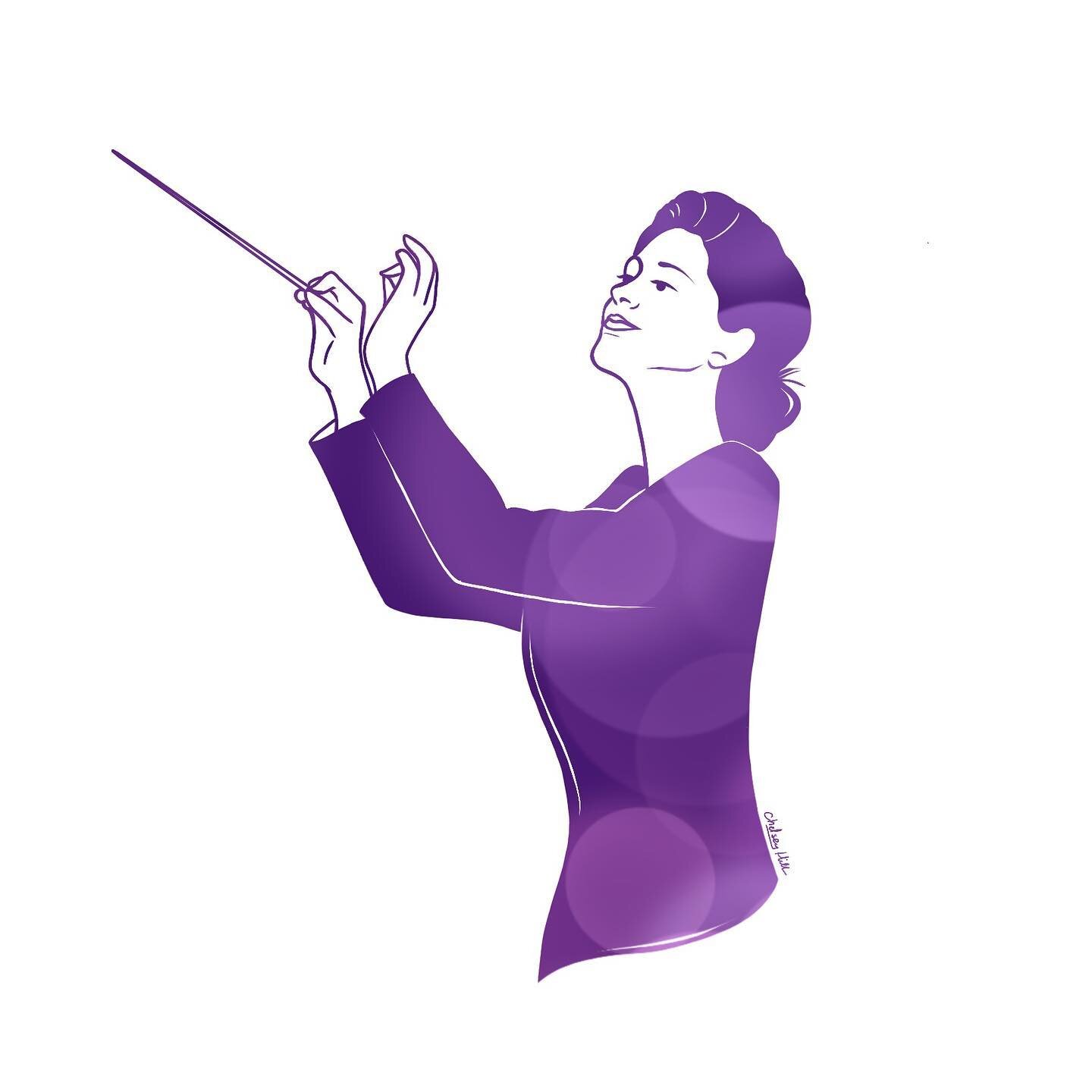Let’s begin by watching the following video. Taiko music probably sounds somewhat familiar to you in that you have heard it or music similar to it before. As you watch the video, consider some things:
Where have you heard this type of music before?
Do you associate it with a specific place/culture/people/setting?
What purpose might this type of music serve?
In this video specifically: how are the drums similar or different than drums you see regularly? How are they and the performers arranged physically? What about the music itself? What is striking you about the Rhythm/Melody/Harmony/Timbre/Dynamics/Texture/Form of the music that gives Taiko its unique quality?
太鼓 ORIGINS OF TAIKO
Taiko is a style of music from the island of Japan located just east of the Asian continent.
The word TAIKO (太鼓) in Japanese literally translates to “fat drum” in English. Outside of Japan, however, Taiko refers to the collection of instruments and musicians like the ones seen and heard in the video above.
It is believed by musicologists that Taiko drums first made their way to Japan as part of religious and cultural influences of Buddhism that made its way to the island by way of Korea and China in 400-500 C.E. In 702 C.E., the Japanese constitution (Taiho Ritsuryo) was signed and included language on imperial court music. Taiko drums have served as part of civic and courtly music since this date.
In the feudal era of Japan, Taiko drums were present in a variety of music and theatre forms that arose including Noh, Kabuki, gagaku, kagura, and Shinto religious music resulting in many sizes and construction methods of the drum. In times of war, large Taiko drums were played to synchronize the movement of troops, relay directions via rhythmic patterns, or even intimidate enemies. For centuries, Taiko drums were played as a single drum - either solo or with other, non-drum instruments. In many religions, only ordained men were permitted to play the Taiko during specific ceremonies (sometimes only once a year).
This all changed in 1951.
Daihachi Oguchi (1924-2008)
DAIHACHI OGUCHI was a Japanese jazz drummer who came across an old piece of Taiko music. Because he could not read the ancient notation, he sought out a Taiko drummer who could play the piece for him. Oguchi then TRANSCRIBED (wrote the music he heard by ear into legible music manuscript form) the piece, making him able to read and translate more traditional Taiko music as well as begin to write his own. Oguchi then had the idea to write music for multiple Taiko drummers to play together like multiple drums of a drum set. This is the style of Taiko drumming we are familiar with today.
A Taiko ensemble is referred to as a KUMI-DAIKO (組太鼓) or “collection of drums.”
TAIKO | DAIKO
The word TAIKO can refer to the actual drum, the type of music performed on the drum, or the group of musicians that perform the music. The word Taiko starts with a “T” when it is by itself. When used as a suffix to refer to something specific like a type of drum, specific style, or titled Taiko ensemble, the “T” becomes a “D” for -DAIKO.
WHY TAIKO?
Today, the Kumi-Daiko form of Taiko exists purely for audience entertainment and the artistry of its performers as well as to promote and maintain traditional Japanese cultural heritage. Taiko ensembles are highly skilled, highly physical, and highly choreographed in their movements. While they often appear to be dancing in performance, the control and approach to the drumming technique is very similar to many styles of martial arts. Taiko drummers seek to develop control over their bodies and a connection with their drum and ensemble members through Attitude, Form, Technique, and Energy.
TAIKO INSTRUMENTS
長胴太鼓 NAGADŌ-DAIKO
A large Ō-Daiko
NAGADŌ-DAIKO (“long-body drum”) is the most popular type of taiko. It is made with a hollow, round and slightly curved wooden body (like a wine barrel) with two skin drum heads fastened to either end with rivets. These drums are also found played in Shinto shrines and Buddhist temples. The sound produced by this drum is low and loud while the timbre is deep, rich, and booming. Nadagō are categorized further by different sizes and uses included in the categories below. They can be played in many versatile ways and are placed on the ground or on a stand.
Ō-DAIKO (“big drum”) can get as big as 72” diameter drumhead
CHU-DAIKO (medium) generally 19”-33” diameter drumheads
KO-DAIKO (small) generally a 12” diameter drumhead
Several Shime-Daiko
締め太鼓 SHIME-DAIKO
SHIME-DAIKO are the “snare drums” of Taiko, having shallow bodies with tunable heads and performing more complex rhythms than other Taiko drums. Shime-Daiko come in a variety of sizes but are always quite small compared to the Nagadō-Daiko. They are played on the floor or on stands. The drumheads are attached to the drum with ropes or sometimes bolts. The timbre of the drum is thick, flat, and cutting.
A woman playing two Tsuzumi-Daiko
鼓 TSUZUMI
The TSUZUMI drums are another rope-fastened drum similar to the Shime-Daiko and also tend to be on the smaller side. The main difference is that these drums are not cylindrical, but rather hourglass-shaped and tend to be longer than the Shime-Daiko to accommodate the shape. While Tsuzumi can be found in Taiko drumming, they are more often associated with other styles of Japanese traditional music like that of Noh Theatre. The timbre of this drum is thin, light, and resonant.
HOW TAIKO DRUMS ARE MADE
All Taiko drums consist of a hollow wooden body with skin drumheads attached to both sides to create an enclosed RESONATION CHAMBER (the space in the middle of the drum where the sound is amplified). Most Taiko drums are carved from a single piece of wood, but some can be built from bent planks of wood like a wine barrel (in some parts of the world, people create Taiko drums from actual wine barrels). The inside of Taiko drums are ornately carved which also creates a more complex pattern of sound wave resonance and adds to the overall Timbre quality of each drum.
撥 BACHI
BACHI are the pair of sticks used to play Taiko drums. They are made of wood (either oak, maple, machilus, magnolia, or cypress) and come in different lengths and shapes but are usually an even cylindrical shape rather than the tapered shape we see in American/European drum sticks. Based on the shape, size, and material, Bachi can produce very different sounds on the same drum.
OTHER INSTRUMENTS
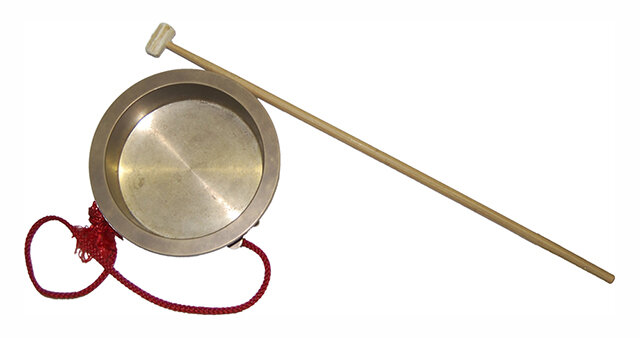
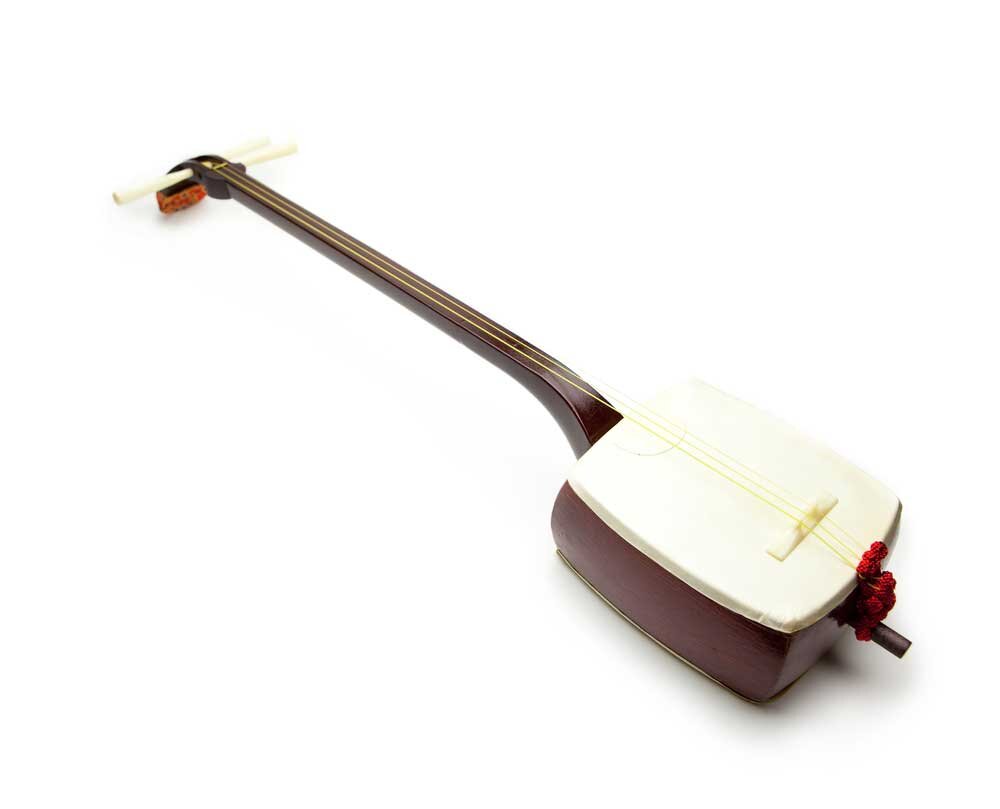
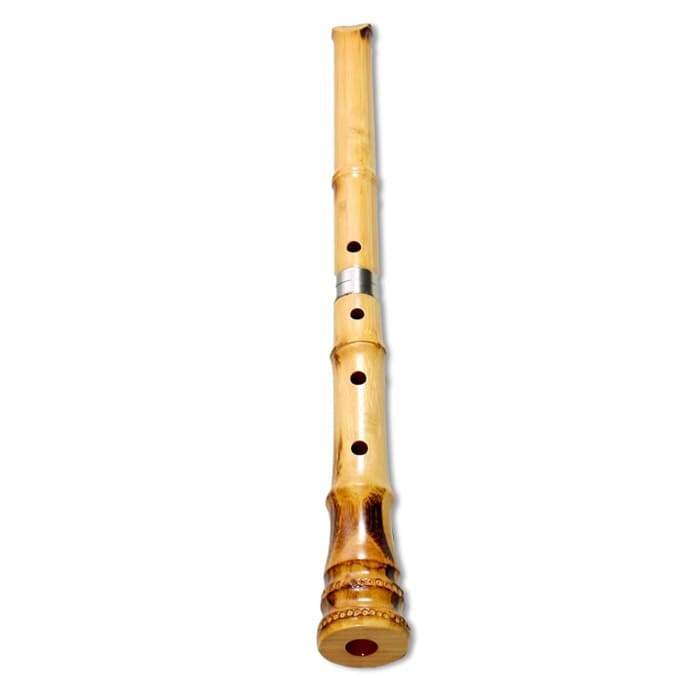
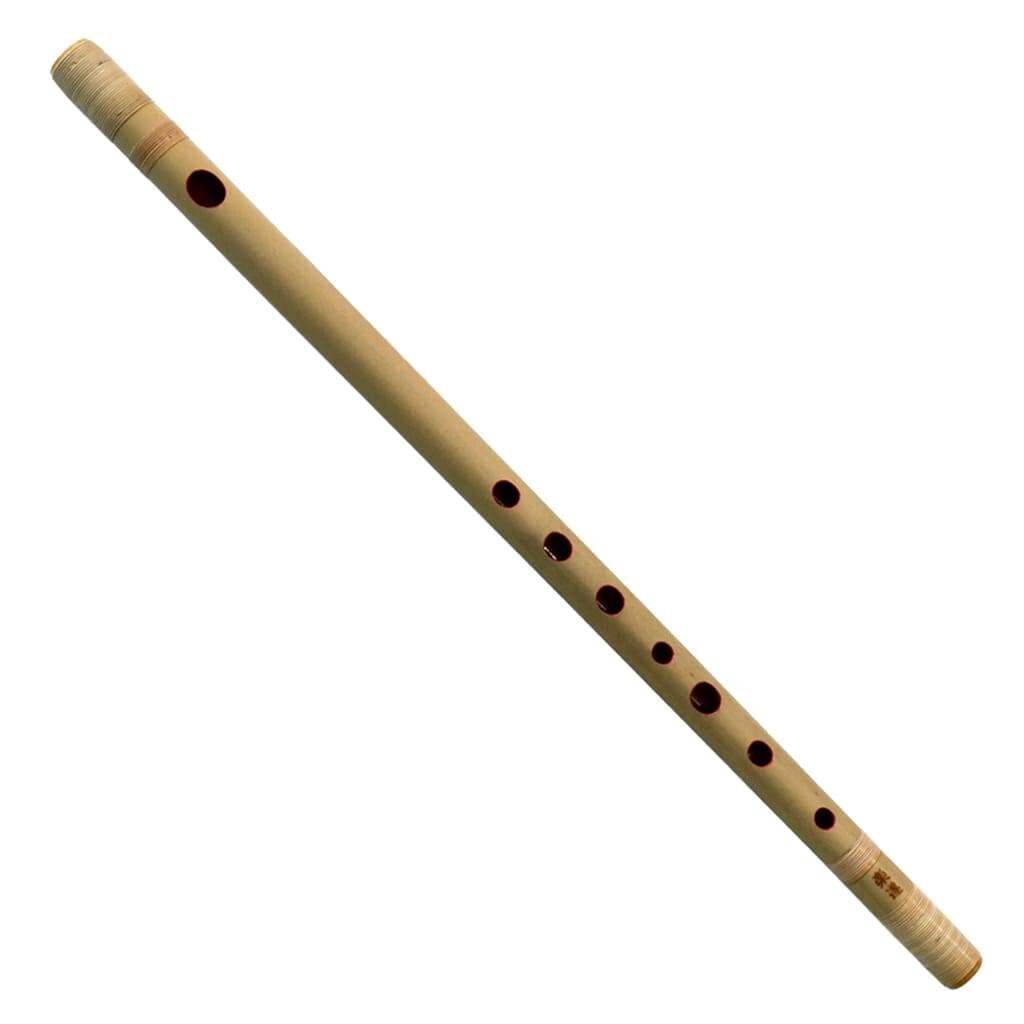
Kumi-Daiko ensembles often include other non-drum instruments to add melodic, harmonic, and timbral elements to the performative music. These instruments aren’t standard and vary from ensemble to ensemble. Some ensembles might include:
ATARIGANE or CHANCHIKI: a metal gong struck with a small hammer
SHAMISEN: a three-stringed Japanese “banjo” played with a large pick
SHAKUHACHI: an end-blown open-holed bamboo flute
SHINOBUE: a transverse open-holed bamboo flute
KAKEGOE & KIAI
Similar to the Mariachi’s Grito, the KAKEGOE and KIAI are vocalizations made by members of Kumi-Daiko ensembles to either provide instructions (like changing sections or tempo in the music) or to provide encouragement and energize the ensemble members or audience. These are the same terms for vocalizations made in martial arts and traditional theatre.
家元 IEMOTO TRAINING & SCHOOLS
Because Timbre plays such an important role in Taiko drumming, where one hits a drum is critical to achieve the intended sound. Therefore, an oral tradition of masters training students in the Iemoto style has been most prevalent in Taiko drumming for most of its history. IEMOTO is a style of arts education in Japan dating back centuries. In this pedagogy, an Iemoto (“Grand Master”) of a specific art will instruct followers as apprentices in art forms including music, dance, calligraphy, martial arts, and tea ceremonies. This style is most often used for non-ensemble Taiko drumming. Kumi-Daiko is a more modern form of Taiko performance and is therefore taught in a more modern schooling system.
In the United States, UCLA and Stanford were the first colleges to start Taiko programs in the early 1990’s. Today, there are many Taiko clubs and schools around the USA including programs locally at University of Washington and University of Puget Sound.
MUSICAL ELEMENTS OF TAIKO
RHYTHM: This is the most important element of Taiko drumming. Based on the style of Taiko and the type of drum one is playing, there are specific rhythm patterns to play that will fit with the rest of the ensemble. Often, the smallest drum keeps a steady but busy rhythm and is responsible for changing the tempo and form. The very large drums usually just give consistent pulse. The middle-sized drums are responsible for the majority of the complex and interesting rhythms. While the majority of Taiko is performed at a steady pace, musicians will use the rhythmic concepts of ACCELERANDO (speeding up) and RITARDANDO (slowing down) to move between sections or heighten the drama of the piece.
MELODY: When referring to unpitched Taiko drums only, there is no discernible presence of melody. When other melodic instruments are added to the Kumi-Daiko like flutes and string instruments, melody is then incorporated into the overall effect. Most melodic instruments that participate in Kumi-Daiko perform melodies in the minor pentatonic scale (1♭3 4 5♭7).
HARMONY: As with melody, there is no discernible presence of harmony in Taiko drumming. When other melodic instruments are added to the Kumi-Daiko like flutes and string instruments, harmony may then incorporated into the overall effect but often these instruments are playing melodies in unison, resulting in a lack of harmony in most Taiko music.
TIMBRE: The timbre of the drums is very important as they must be both heard and felt. Great attention is paid to the materials the drums are made from as well as the bachi used to hit the drums. Taiko sound booming, thick, and penetrating.
DYNAMICS: Taiko drumming tends to be very loud and the large drums are so resonant that the vibrations can be felt in the body as well as heard. Taiko performers use crescendo and diminuendo effects to build and decay the volume over time in order to heighten the energy and drama of Taiko performance.
TEXTURE: Most Kumi-Daiko include a variety of drum types and sizes. With some exceptions, each type of drum will be played in unison together with a different rhythm than other drums. This is similar to how voice parts sing the same notes in a choir. The texture of Taiko music often begins with a solo drummer who cues the other drums in and slowly builds until everyone is playing together. It should be clarified that this refers to rhythmic texture and not harmonic texture.
FORM: Pieces of Taiko music are broken down into sections that change tempo, meter, and texture. The various sections are announced via the Kakegoe (“yell”) of the lead performer or a shift in the Shime-Daiko’s beat.
TAIKO SUB-GENRES
Eisa Dancers at Ryukyu Mura Cultural Park in Okinawa, Japan
EISA (エイサ): a group folk dance performed by youth from Okinawa including the use of Taiko drums played by the dancers. This style also features singing/chanting.
Hachijo-daiko performed by Yuta Kato and Masa Miyano
HACHIJŌ-DAIKO (八丈太鼓): a style from Hachijo-jima, a small island, where two performers play on either side of the same drum. One plays a regular, specific beat while they other improvises an invented rhythm on the spot.
Miyake-Daiko performed by UnitOne
MIYAKE-DAIKO (三宅太鼓): a style from Miyake-jima, Mikaye-Daiko also includes two performers playing on one drum but the drum is often on the ground or set right above the ground. The players take a stance where they are hovering right above the ground while they play. Unlike Hachijō-Daiko, Miyake-Daiko does not include an element of improvisation.
COSTUME
There is no set uniform for Kumi-Daiko ensembles but Taiko musicians often wear traditional Japanese clothing. This could include the HAPPI (lightweight, loose-fitting robe), and the HACHIMAKI (headband). Some Kumi-Daiko will even wear FUNDOSHI (loincloth-like underwear) during performances to highlight the physical nature of the art.
Taiko drummers wearing matching Happi and Hachimaki
A Taiko drummer wearing a Fundoshi and a Hachimaki
Kodō (Sado Island, Japan)
FAMOUS TAIKO ENSEMBLES
KODŌ (Japan)
OEDO SUKEROKU TAIKO (Japan)
ONDEKOZA (Japan)
SAN FRANCISCO TAIKO DOJO (USA)
WHERE TO HEAR TAIKO IN THE USA
Touring Taiko Concerts and Performances
College Campuses
Taiko Schools
Japanese & Asian Cultural Festivals
Shinto Shrines
Japantown Neighborhoods (Seattle, San Francisco, San Jose, Los Angeles)
